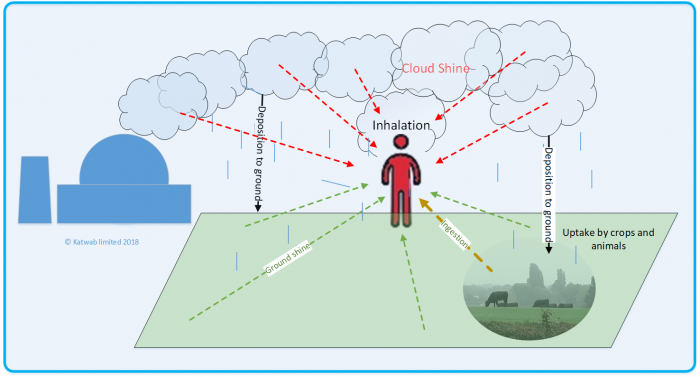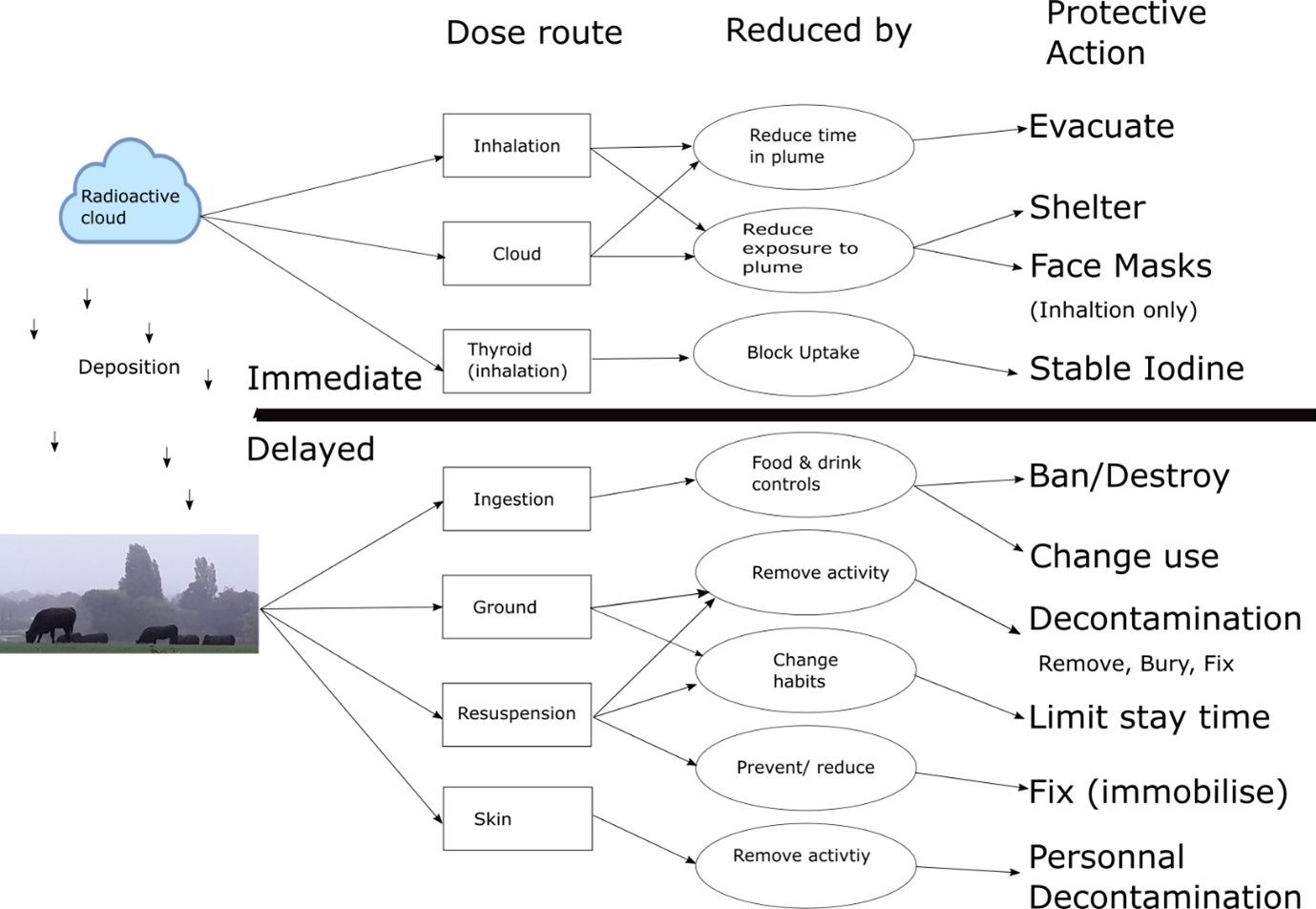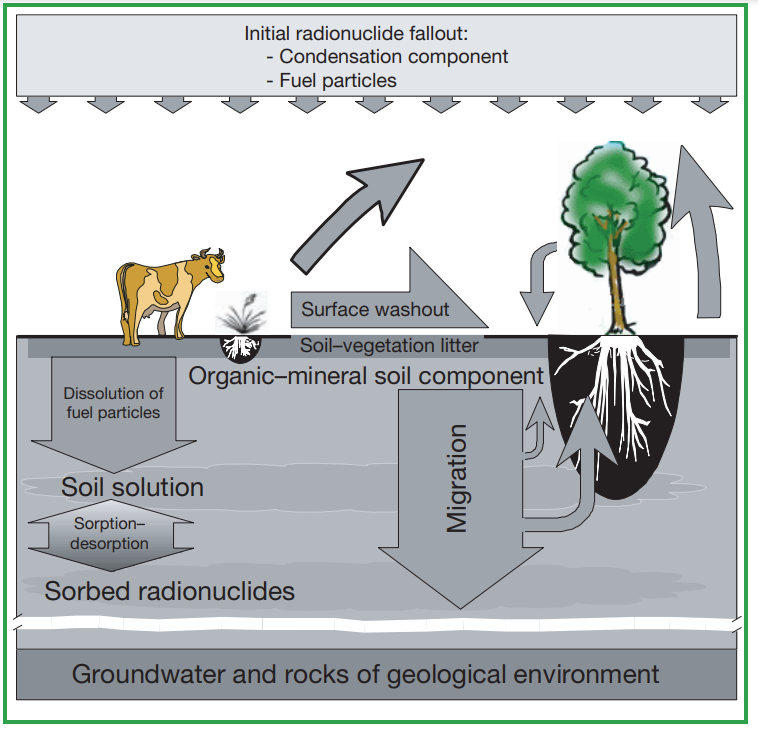Pathways
There are several ways in which you could be exposed to radiation following a release of radioactive dust or gas to the air.

If the cloud of radioactive gas or dust passes near enough to you for the radiation from it to reach you then you will receive a radiation dose we call “cloud shine”. Radioactivity that has deposited on surfaces such as the ground, walls, roofs or trees can continue to decay giving off radiations resulting in a radiation dose due to “ground shine”. These are examples of external radiation.
If you are inside the cloud of radioactive gas and dust, then you will breathe in some of the radioactivity and some of it will stay in your body and later decay giving you a “inhalation dose”.
Radioactivity may land on food crops such as vegetables or fruit or may land on the grass eaten by cows and other animals leading to food becoming radioactive. If that contaminated food were to be eaten the radioactivity would get into body and provide an “ingestion dose”.
Inhalation dose and ingestion dose are both the result of “internal radiation”. Cloud and ground shine are “external radiations”.
The protective actions we advise you to take seek to minimise your radiation dose by:
- Reducing the amount of radioactivity that you breathe in by:
- Sheltering in a building that helps to keep the radioactive dusts and gases out or
- by evacuating the area to prevent all inhalation.
- Reducing the amount of radioactivity that you eat by preventing contaminated food being sold and advising against eating food from local gardens, allotments and hedgerows.
or nuclear reactor faults you may also be advised to take stable iodine tablets (otherwise called potassium iodide tablets, PITs or SITs). These reduce the dose to the thyroid from radioiodine, a radioactive material found only in operating reactors.
Protective Actions
With an understanding of the pathways whereby a release of radioactive material may lead to an additional radiation dose to an individual we can devise strategies to reduce those additional doses.

The art of emergency preparedness then becomes a question of determining when the gains from implementing a protect action out weigh the costs of preparing for and implementing it and then working to ensure that, where a particular protective action is justified, that the public are alerted and willing and able to put it into action in a timely and effective manner.
Movement of radioactivity in the environment
Once deposited on the ground or other surfaces the radioactive material might be expected to migrate rather than stay put. Many factors influence the extent to
which radionuclides are transferred through terrestrial pathways. These include the chemical and physical properties of the radioactive material. For example, soluble
forms will dissolve in surface or ground water and migrate with the water flow at speeds depending on the water flow rate and their interactions with the soil.
Caesium, iodine and strontium, are environmentally mobile and transfer readily, under certain environmental conditions, to foodstuffs. In contrast, radionuclides with low
solubility, such as the actinides, are relatively immobile and largely remain in the soil.
A great deal of work has been undertaken investigating the movement of radioactive material post Chernobyl. See, for
example Environmental Consequences of the Chernobyl
Accident and their Remediation: Twenty Years of Experience
